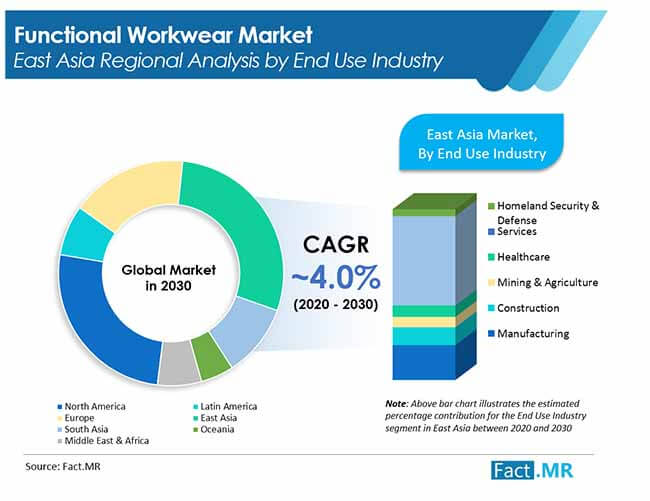Workwear Apparel Market In the modern work landscape, attire is more than just clothing; it’s a statement of functionality, safety, and professionalism. Enter functional workwear apparel – a dynamic segment of the fashion industry that caters to the needs of professionals across various sectors. This blog delves into the evolving world of functional workwear apparel, highlighting its significance, innovative features, market trends, and its pivotal role in enhancing both performance and safety.
For More insights into the, Request a Sample of this Report:
Function Meets Fashion: The Essence of Functional Workwear
Functional workwear apparel is designed to bridge the gap between utility and style. It goes beyond aesthetics, prioritizing comfort, durability, and safety. This unique combination makes functional workwear a crucial component of various industries, from construction and healthcare to hospitality and manufacturing.
Innovative Features for Enhanced Performance
Advanced Fabrics: The use of high-performance fabrics, such as moisture-wicking materials, flame-resistant textiles, and antimicrobial finishes, ensures that workers are equipped to handle demanding conditions.
Ergonomic Design: Functional workwear is tailored to allow ease of movement, reducing fatigue and enhancing productivity.
Smart Technology Integration: Some functional workwear includes embedded technology, such as sensors that monitor vital signs, GPS tracking, and even communication systems, further improving safety and efficiency.
Ensuring Safety in Challenging Environments
High Visibility: Reflective strips and bright colors are often incorporated into functional workwear for professions that require visibility in low-light conditions, reducing the risk of accidents.
Flame and Chemical Resistance: Firefighters, industrial workers, and professionals dealing with hazardous substances benefit from flame-resistant and chemical-resistant workwear that provides a protective barrier.
PPE Integration: Personal Protective Equipment (PPE) is seamlessly integrated into functional workwear, reducing the need for multiple layers and ensuring compliance with safety regulations.
Market Trends and Growth Drivers
The functional workwear apparel market is influenced by several key factors:
Industry-Specific Solutions: As different industries have unique requirements, specialized functional workwear tailored to specific needs is gaining traction.
Sustainability: Eco-friendly materials and production processes are becoming essential considerations for consumers and manufacturers alike.
Customization and Branding: Companies are increasingly opting for customized workwear to promote their brand identity while ensuring that their workforce is equipped with the right tools.
Health and Comfort: The emphasis on worker well-being has led to the integration of features that promote comfort, such as moisture-wicking, breathable fabrics and adjustable fittings.
Future Outlook and Impact
The functional workwear apparel market is poised for continuous growth, driven by technological advancements, safety regulations, and changing work dynamics. As industries evolve, the demand for specialized and innovative workwear solutions is expected to rise, shaping the market’s trajectory.
Conclusion
Functional workwear apparel is more than just clothing; it’s a testament to innovation, safety, and adaptability. As industries continue to evolve and prioritize worker well-being, the functional workwear market will play an instrumental role in ensuring that professionals are equipped with the right gear to perform at their best while staying safe. As technology, sustainability, and performance continue to intersect, the functional workwear apparel market stands ready to elevate the standards of safety, comfort, and efficiency in the workplace.
